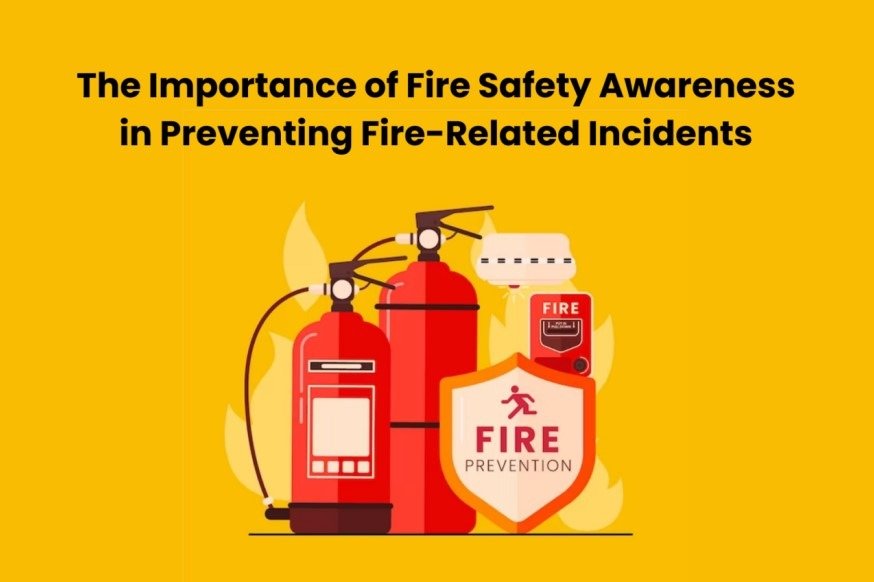Tragedies involving fires are a global problem since they cause enormous harm to people, their possessions, and the environment. Fire Safety Awareness is critical in avoiding these tragic incidents, and its significance must be recognised. If they have Fire Safety Certification, people and businesses can be better prepared to deal with fire crises and reduce the hazards involved.
Table of Contents
- Understanding Fire Safety
- The Role of Fire Safety Certification
- Fire Prevention Strategies
- Importance of Fire Drills and Training
- Essential Fire Safety Equipment
- Community Involvement in Fire Safety
- Impact of Awareness on Emergency Response
- Economic Benefits of Fire Safety
- Fire Safety: A Global Perspective
- Conclusion
Understanding Fire Safety
When people talk about fire safety, they refer to measures taken to make communities less flammable. It entails a collection of rules and regulations that people must follow in their homes, places of business, and public areas to protect themselves and their belongings. Being fire safety conscious is more than simply being familiar with these rules; it’s about making them a part of who we are.
The Role of Fire Safety Certification
Improving fire safety awareness is mainly accomplished through fire safety certification. It is common practice to grant these credentials to those who successfully complete fire safety training programmes that include a wide range of topics. Professionals in charge of fire safety in organisations must have these qualifications because they teach people how to spot potential fire risks, put measures in place to reduce those risks and react appropriately in the event of a fire.
Fire Prevention: The First Step in Fire Safety
“Prevention is better than cure” is a saying that rings particularly true when discussing fire safety. Preventing fires from breaking out is the best method to handle them. This includes following all fire safety regulations and guidelines, keeping electrical equipment in good working order, and inspecting the premises regularly.
Importance of Fire Drills and Training
In order to keep people safe from fires, it is essential to do training sessions and exercises regularly. Everyone makes sure they know what to do in the event of a fire by participating in these exercises, which include topics including safe evacuation and the proper use of fire extinguishers. Learning to remain composed and make logical judgements in a fire emergency is another important part of fire safety training.
Fire Safety Equipment
A complete fire safety plan must include the proper fire safety equipment, which includes smoke detectors, fire alarms, and fire extinguishers. Having this equipment on hand and in good functioning order is crucial for responding to and containing fires effectively.
Community Involvement in Fire Safety
Everyone in the community has a role to play in making our neighbourhoods safer from fires. Community participation programmes are a great way to get the word out about fire safety. Public education campaigns, seminars, and workshops on fire safety measures are all examples of what this type of programme might entail.
The Impact of Fire Safety Awareness on Emergency Response
It can significantly enhance the efficacy and efficiency of emergency response by raising knowledge about the importance of fire safety. When people know what to do in the event of a fire, it makes it easier for emergency personnel to contain the problem and get the job done.
The Economic Benefits of Fire Safety
Fire prevention techniques can have substantial monetary rewards in addition to saving lives and avoiding injury. People and companies may save money and effort by lowering the fire risk. Putting money into fire safety is a long-term investment in prevention.
The Global Perspective
Fire safety is an international concern. Global efforts to enhance fire safety legislation and standards are ongoing. International collaboration and the exchange of successful strategies are essential to raise fire safety awareness on a worldwide scale.
Conclusion
Fire safety knowledge is crucial in reducing the number of fire-related events. Every member of our community, as well as our businesses and other organisations, must do their part. Health & Safety Courses, frequent training and exercises, well-maintained fire safety equipment, and community engagement may significantly reduce the likelihood of fires. The safety and well-being of everyone depend on the development and maintenance of a fire safety attitude, which is more than merely following a set of rules.
